
Which phormium to plant according to your region?
New Zealand flax can be a bit temperamental: choose it according to your climate
Contents
Phormium or New Zealand flax, indicates its origin by its common name: native to New Zealand, it grows naturally in marshy areas. Discovered by the French at the end of the 17th century, it was traditionally used by the Māori for its very strong fibrous leaves: weaving, clothing, fishing nets… Numerous uses are indeed possible with its long lanceolate leaves. In the garden, Phormiums are also highly valued: they are ideal plants for adding colour and structure. Their drawback, if one must be found, is their sensitivity to cold. Indeed, not all latitudes and climatic zones are suitable for their cultivation. The genus Phormium comprises two unique species: Phormium tenax, better suited to Mediterranean drought, and Phormium cookianum, which prefers the milder, wetter conditions of the Atlantic. If you are wondering where to plant Phormiums based on their hardiness to enjoy their qualities in your borders, we offer a distribution by climates, where they can happily acclimatise!
→ To learn more about the hardiness of plants: “Climate zones and USDA zones in France” and “Hardy plants and hardiness”
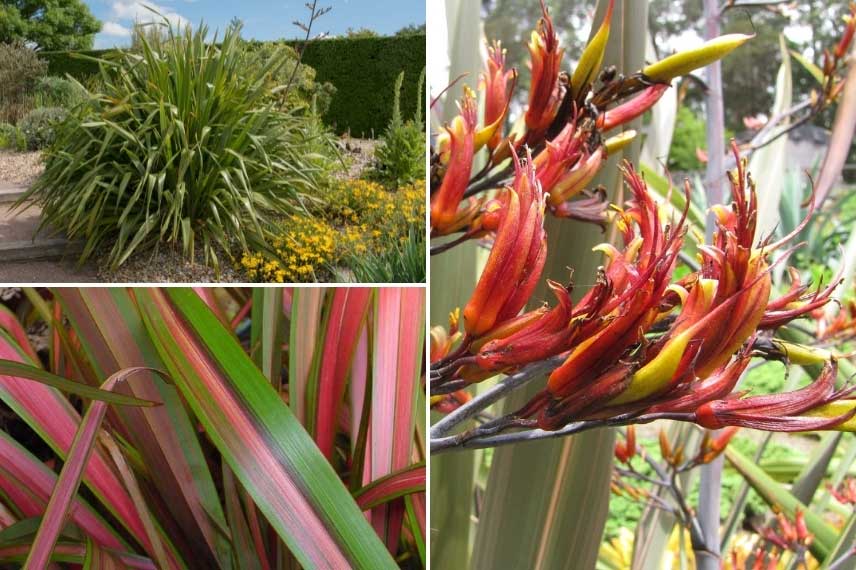
Interesting for their graphic silhouette and decorative foliage, Phormiums are also remarkable for their flowering
Planting phormium in a Mediterranean climate
Magnificent perennial with generous clumps of strap-like leaves, Phormium or New Zealand flax has inherited a natural frost sensitivity from its exotic origins. One would wish to plant it everywhere, but it must be acknowledged that hardiness is not its strongest trait. It has other qualities: a palette of solid or variegated shades ranging from green to purple, including magenta pink, a graphic habit, generous masses of evergreen foliage, and stunning, colourful flower spikes.
Gardeners fortunate enough to live in Mediterranean regions can create beds where New Zealand flax will associate with agaves and drought-tolerant perennials thanks to Phormium tenax. In areas where the climate is mild year-round, with very little frost to fear and hot, dry summers, it will withstand drought quite well once well-rooted. However, it prefers fertile, well-drained soils: soil preparation should be carefully considered at planting with the addition of organic matter and drainage. Note that Phormium is among the plants highly resistant to sea spray: it will therefore find its place by the seaside, although strong winds can lacerate the leaves of some less hardy varieties. Once all conditions are met for growing Phormiums in open ground, you will have a choice among numerous varieties, classified here according to foliage colours to facilitate your selection:
- Green and variegated foliage: Phormium tenax, Phormium tenax ‘Yellow Wave’ and Phormium tenax ‘Variegatum’
- Pink foliage: Phormium ‘Pink Stripe’, Phormium ‘Rainbow Queen’, Phormium ‘Rainbow Sunrise’ and Phormium ‘Sundowner’
- Purple and black foliage: Phormium ‘Pink Panther’, Phormium tenax ‘Purpureum’, Phormium ‘Alison Blackman’ and Phormium ‘Chocomint’
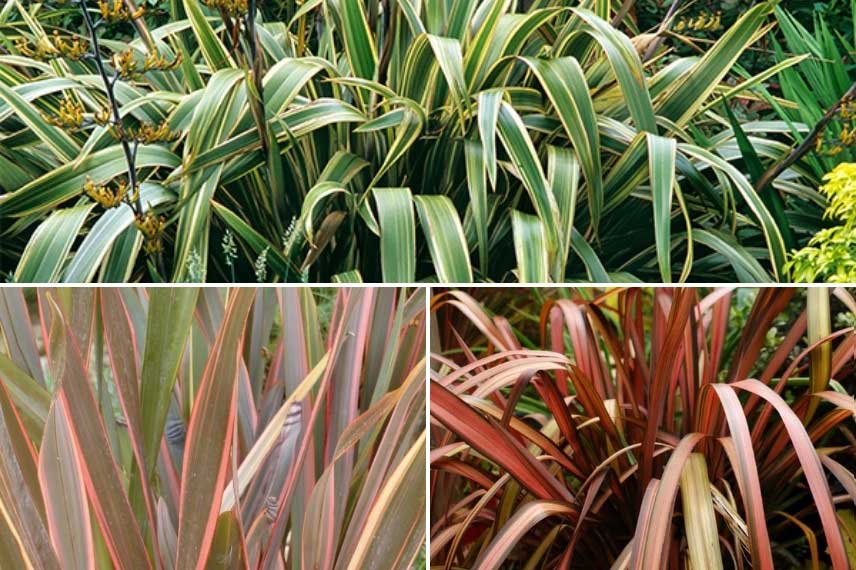
Phormium tenax ‘Variegatum’, Phormium ‘Sundowner’ and Phormium ‘Pink Panther’
Planting phormium in oceanic climate
The oceanic climate features mild characteristics where phormium can acclimatise, but also a higher rainfall compared to near the Mediterranean. With temperatures rarely dropping to –10 °C, New Zealand flax will blend well with the local plant palette, including both bushes and perennials, where their stature will certainly stand out: create beautiful shades of foliage with green and variegated Phormiums or dare to use more colourful contrasts with the purple Phormium. In the Atlantic coastal zone, you can confidently plant the New Zealand flaxes from this selection:
- Green and variegated foliage: Phormium cookianum ‘Tricolor’, Phormium ‘Golden Ray’ and Phormium cookianum ‘Blondie’
- Pink foliage: Phormium ‘Jester’ or Phormium tenax ‘Evening Glow’
- Purple and black foliage: Phormium cookianum ‘Black Adder’, Phormium ‘Dark Delight’, Phormium ‘Margaret Jones’ and Phormium ‘Special Red’
Sophie’s advice: if frost is occasionally a concern beyond what your phormiums can reasonably withstand, consider mulching at the base and providing protection with a winter fleece.
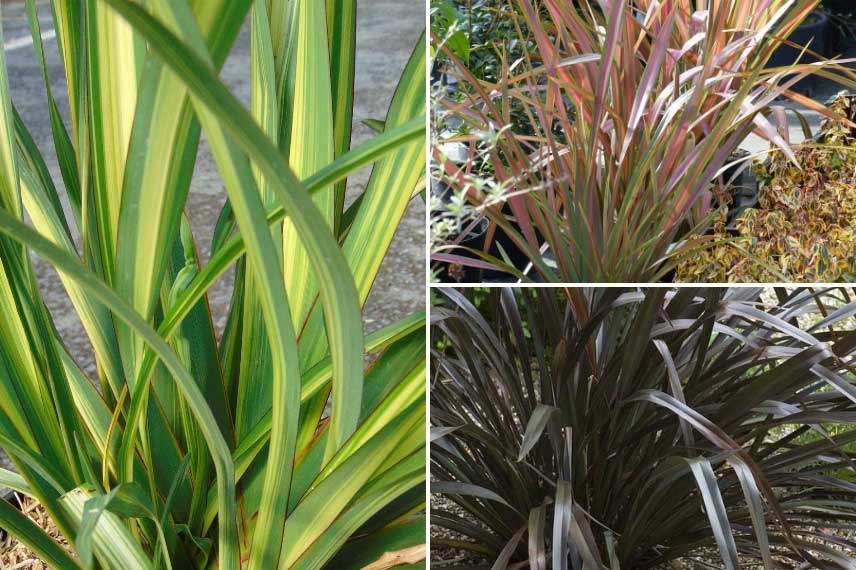
Phormium ‘Golden Ray’, Phormium ‘Jester’ and Phormium cookianum ‘Black Adder’
Discover other Phormium
View all →Available in 0 sizes
Available in 1 sizes
Available in 1 sizes
Available in 2 sizes
Available in 2 sizes
Available in 3 sizes
Available in 1 sizes
Available in 2 sizes
Available in 1 sizes
Available in 1 sizes
Planting phormium elsewhere
If we want to be realistic, let’s accept that Phormium is nonetheless a plant that prefers mild climates. If you want to plant these species that are not suited to your area, simply plant them in pots. As we have seen, New Zealand flax forms generous clumps: it will therefore thrive even better in sufficiently large containers. Large terracotta pots pair very well with the style of these plants, but you can also place them in large wooden planters or more graphic pots, depending on your taste! Just be sure to provide wheels underneath so you can winter them in a sheltered spot, or alternatively, ensure you have a good winter cover.
For your New Zealand flax in pots, do not neglect watering and regular applications of compost or fertiliser, and regularly trim the dry leaves. You can pair it with small flowering perennials or climbing plants that will take a place at the back, choosing plants with the same watering and exposure needs.

New Zealand flax in pots and planters
- Subscribe!
- Contents
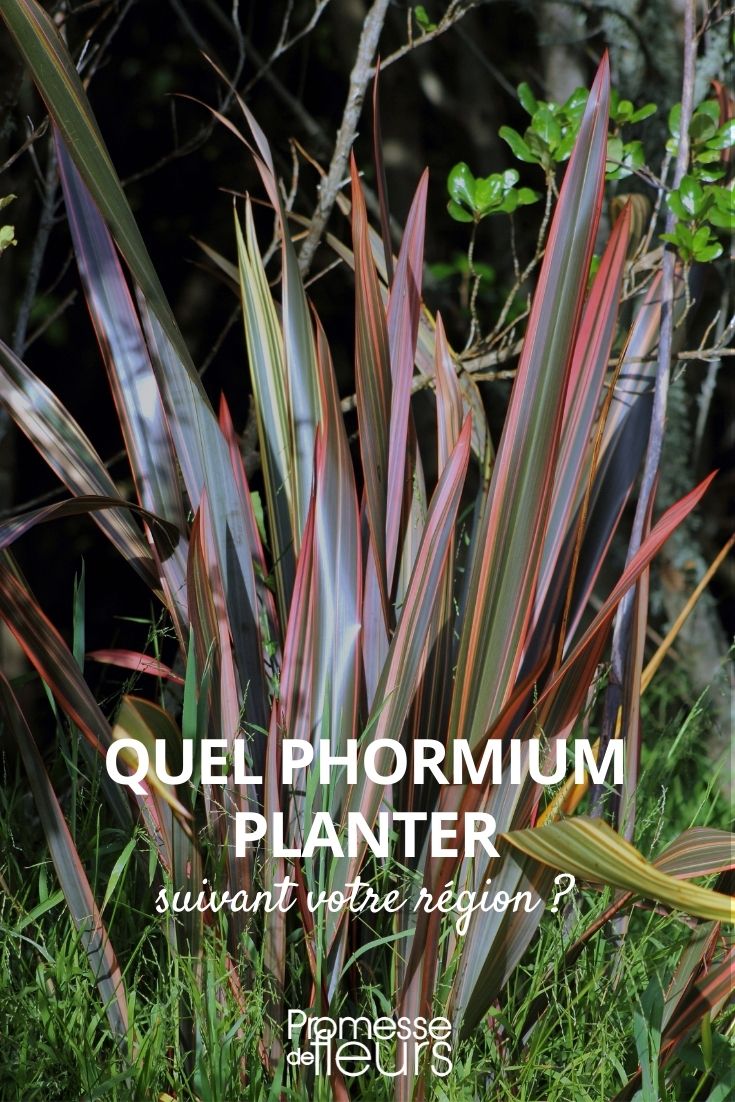

































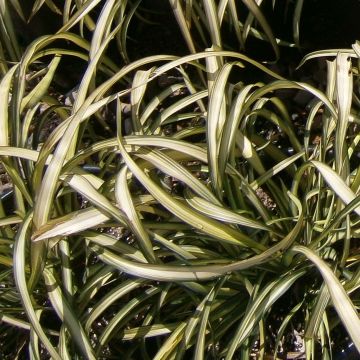
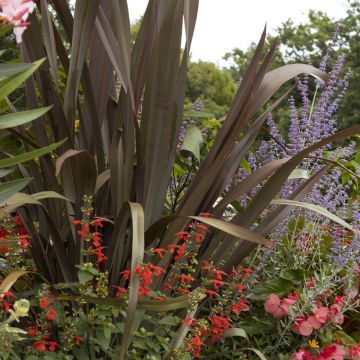
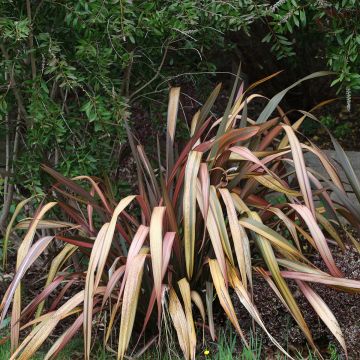


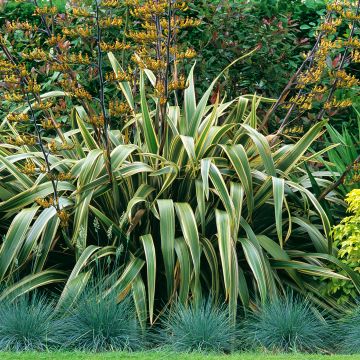
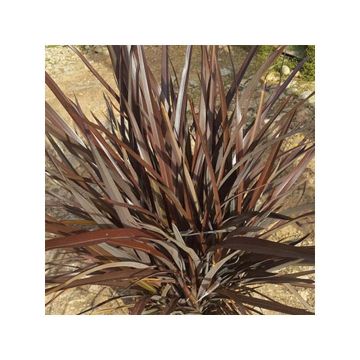
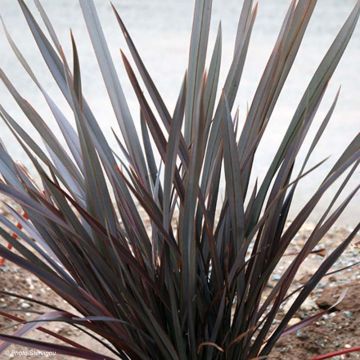
Comments